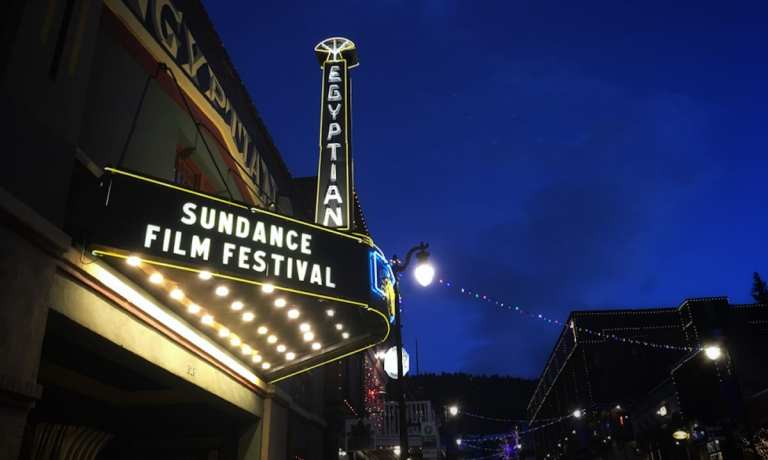Sundance 2021: Netflix, Amazon Underscore Value Of Streaming Platforms

Each January for the past 40 years, throngs of celebrities, directors and studio executives have braved the biting cold of Utah winters to pack the streets and venues of the Sundance Film Festival, the moviemakers’ mecca created by actor Robert Redford in 1978.
That is, until 2021, when the ongoing grip of the coronavirus forced the entire weeklong event to go online for the first time ever — just as it has for so many other aspects of our daily lives over the past year.
For the movie business, which has been among the hardest hit with up to 70 percent of small and medium theaters facing closure or bankruptcy, a well-run and attended online film festival may just be the industry’s saving grace — as well as a demarcation that the shift from the big screen to the little streaming screen is never going to fully reverse.
“The Festival is expanding to screens everywhere. And we’re off to a roaring start! Due to high demand, our Festival, Day and Awards passes, and single film tickets for some features, are also currently sold out,” says the Sundance Institute’s website.
To further the virtual vibe, Sundance has set up satellite screening locations (with limited seating) at arthouse cinemas in 28 cities across the country, spanning Honolulu to Miami to Boston.
Content For Sale
As much as Sundance had, for some attendees, become more of a party than a legitimate art exposition or business trip, the economic realities of the increasingly digital content acquisition market still control the day.
Where once studio executives could attract hot new films and unsigned talent with promises of splashy openings across thousands of screens, it’s hard to compete with the unmatched check-writing ability — and the alternative access to viewers — of streaming giants like Netflix and Amazon.
“Of the 73 films showing, fewer than 60 are seeking distribution, according to industry sources. That’s down significantly from last year, when about 120 films showed, nearly 100 of which didn’t yet have deals,” the Los Angeles Times reported.
According to the Quartz Daily Brief, “Hollywood’s new normal” that is being played out in the virtual Sundance reflects a changed business, but one that is still lucrative.
“Sundance will likely return to being an in-person event in 2022, but Hollywood’s momentum toward a streaming-dominant ecosystem will continue,” Quartz reported. “The buyers and sellers that descend on Park City each year to elevate indie films into global hits will still attend, but they’ll be buying and selling with the goal of attracting subscribers — not putting butts in theater seats.”
Embracing Change
Change is never easy, but whether it’s working from home, doing curbside pickup or getting groceries delivered, once consumers try and get used to these new digital interactions, they often prefer them.
To that point, when Sundance announced it would go virtual, it was seen as an obvious shift rather than some sort of consolation. In fact, by some measures, the breadth of viewers and inclusiveness that comes with opening up a private party to the world is a big win.
“In the U.S., film premieres can stream straight to your TV. You can join director Q&As afterward from your couch and drop into post-premiere parties from your laptop,” CNET’s preview said, noting the addition of “virtual environments [to] re-create the experience of festival mingling.”
In fact, with almost a year of COVID-era digital living now under our belts, the idea of streaming anything has become second nature.
“The usual Sundance rhythm: filmmakers, journalists, movie bizzers and film lovers descend on Utah each January, standing in lines and trudging through snow to see ten, 20, even 30 movies,” Texas Monthly Magazine wrote. “The 2021 Sundance rhythm: filmmakers, journalists, movie bizzers and film lovers descend on their laptops and smart TVs, just like any other day of this pandemic.”
Notably, with remote Sundance screenings being held in Austin, Dallas and Houston, cinephiles in Texas are spoiled for choice, assuming they can still get a ticket.
Different Can Be Better
According to veteran film critic Ann Hornaday, even festival founder Robert Redford had lamented the growing commercialization of his event, and how it had become a venue for celebrity gift bags and “ambush marketing” rather than a showcase for new creative talent.
“This year’s Sundance promises a sense of deja vu,” Hornaday said, noting that a more modest, hype-free festival would also have its advantages. “More than half the films [this year] are directed by first-timers — but they hew to what Sundance always has been about at its purest: artistic audacity and audience discovery.”
To the point, the 84-year-old Academy Award winner seemed to be just fine with the evolution of the business that made him famous: “We’ve forged a new collective vision: one that honors the spirit and tradition of these invigorating yearly gatherings in Utah, while making room for imaginative new possibilities in a new online format,” Redford said.
Read More On Streaming:
- Netflix Adds 8 Million Subscribers, Touts Advertising Revenue
- Paris Olympics Draws 18% More Sponsor Spending Than 2021
- Audible Says New Royalty Model Monetizes More Content
- Amazon’s Wondery Adds ‘Armchair Expert’ Podcast in $80 Million Deal